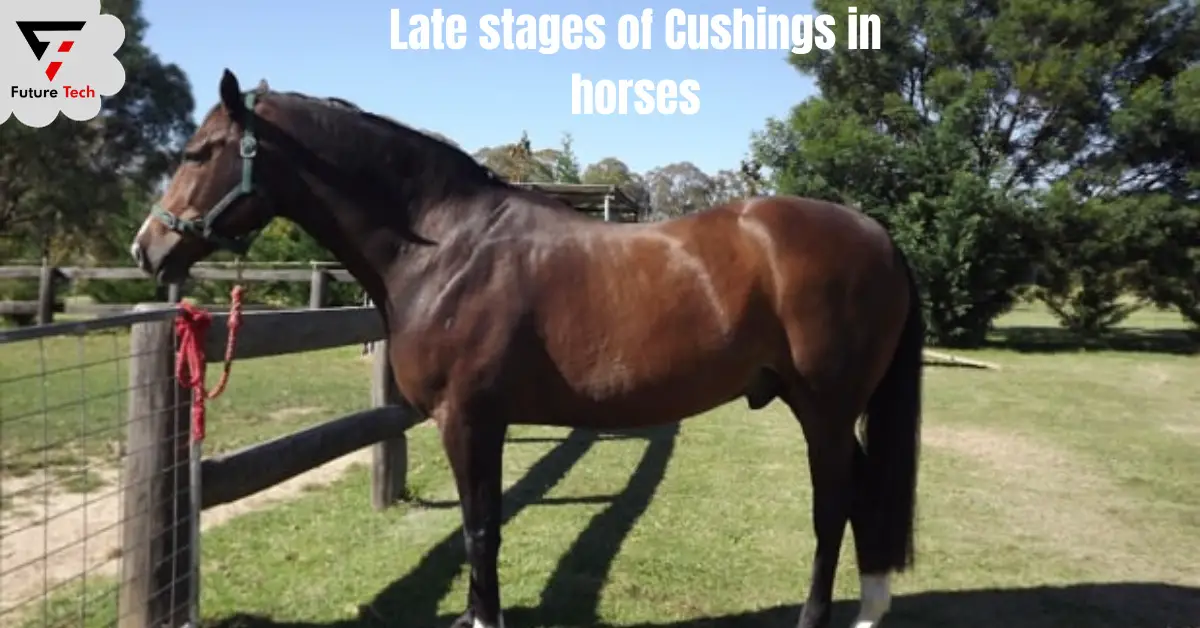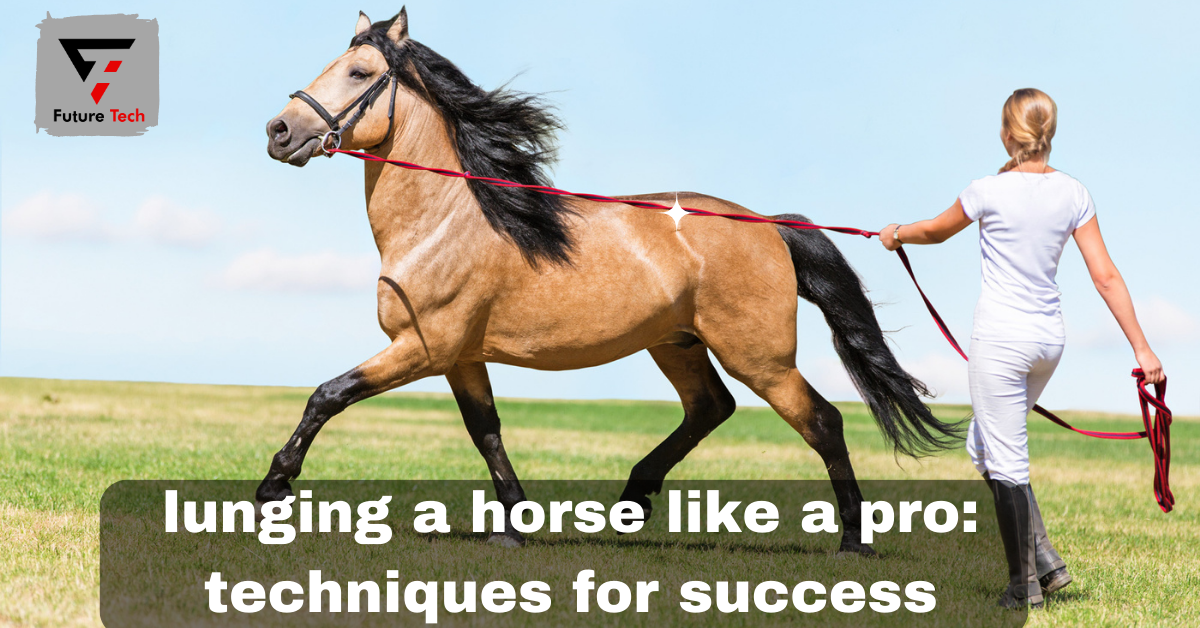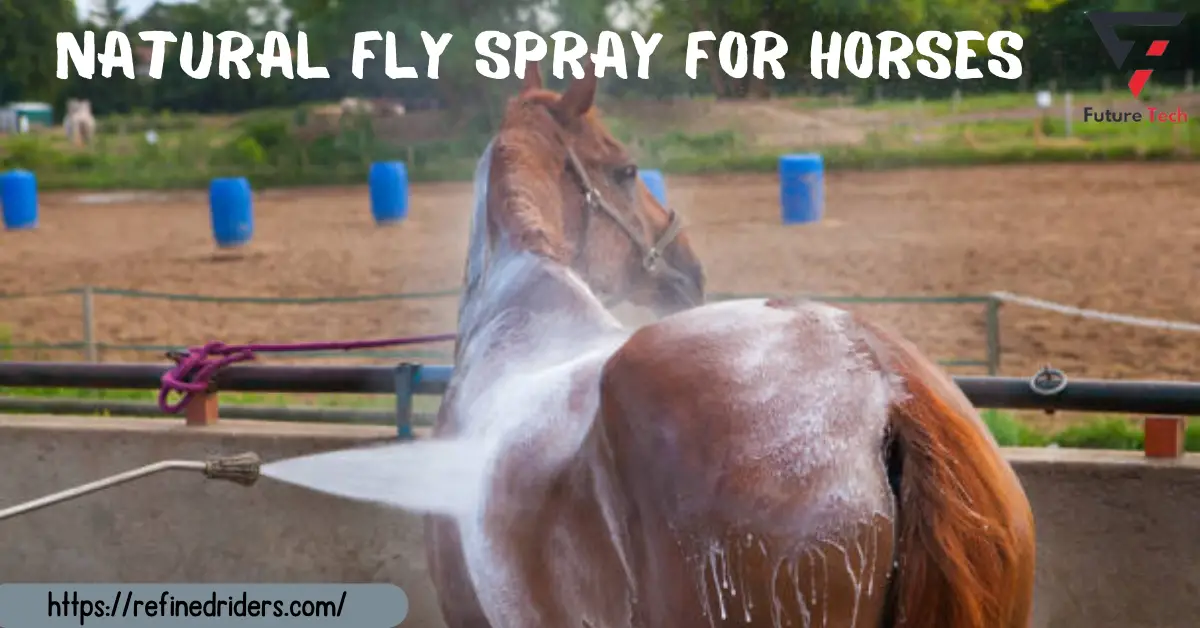For equestrian lovers and carers, the late stages of Cushings disease in horses offer a complex and sometimes upsetting situation. An endocrine problem prevalent in older horses is pituitary pars intermedia dysfunction (PPID), sometimes called Cushings disease. Many problems substantially influencing the horse’s general health and quality of life may arise as the illness worsens. For timely intervention and compassionate treatment, it is essential to identify the symptoms of advanced Cushings disease in horses.
This introduction explores the clinical signs, probable consequences, and the significance of customized care techniques as it dives into the intricacies of late-stage Cushings illness. Comprehending the difficulties associated with advanced Cushings disease enables horse carers to make well-informed choices to improve their beloved companions’ quality of life at this crucial stage.
What Is Cushings Disease in Horses?
Cushings disease, sometimes called pituitary pars intermedia dysfunction (PPID), is horses’ most frequently identified endocrine illness. Horse Cushings disease differs from the ailment that affects humans and dogs in that it involves a different part of the pituitary gland. It is even though both diseases have the same name. The illnesses that impact the synthesis of hormones remain known as endocrine disorders. Cushings disease may affect any horse. However, ponies and Morgan strains may be more susceptible.
Causes of Cushings Disease in Horses
A gradual, degenerative illness of the hypothalamus, PPID, affects horses. Through its interaction with the pituitary gland, the brain’s hypothalamus regulates the release of hormones. The endocrine system in a healthy horse is a well-balanced network of organs and structures that collaborate in several feedback loops to create and control hormone levels throughout the body. Loss of function in the hypothalamus causes issues with the pars intermedia (PI), a part of the pituitary gland, in horses with PPID.
The base of the brain is home to the pituitary gland. The pituitary gland typically produces hormones that aid in controlling regular bodily processes. When the pituitary gland’s PI component experiences an aberrant growth (benign tumor), it results in PPID. The PI section of the gland enlarges as the tumor develops. Consequently, this leads to an upsurge in the synthesis of an adrenocorticotropic hormone (ACTH), which prompts the adrenal gland to release more cortisol. Known as the “stress hormone,” cortisol regulates several vital body processes, including blood sugar levels. Overdosing and persistently high cortisol levels may cause laminitis, insulin resistance, increased susceptibility to infection, and muscular atrophy in horses.
Cushings disease symptoms in horses
A horse is typically approximately 15 years old when Cushings illness first manifests. According to estimates, the condition will affect around 30% of horses in the population that are 15 years of age or older. To recognize Cushings disease early on, mainly if their horse is older, it is advantageous for horse owners to watch for any symptoms. Early detection may improve Cushings horse’s quality of life and facilitate disease management. The following is a list of precursors:
- Increased sluggishness
- Area-specific shaggy hair coat
- Postponed shed
- Decline in topline
- Localized pockets of fat
- Unusual perspiration
- Chronic laminitis
- Recurring abscesses in the hoof
Cushings disease may proceed gradually, although it can also arise unintentionally in later stages. The severity and influence on the horse’s health are much higher in these later phases. The following are signs of Cushings disease in its latter stages:
- The Dull layer of hair
- Poor cutbacks
- Practicing intolerance
- Round belly (appearing potbelly)
- Muscle wasting
- Localised obesity
- Inadequate execution
- Decline in topline
- Increased urination or thirst
- Lack of vision
- Delayed recovery
- Laminopathy
- Apical abscesses
- Tendon/suspensory ligament laxity
Diagnosing Horses with PPID
In horses, PPID may be one of the more challenging conditions for veterinarians to detect, particularly in the early stages when the clinical symptoms are not as obvious. That’s why a more in-depth assessment needs to happen when equestrian owners discover any changes in their horse’s health or behavior.
History of Patients
“Taking a history” refers to a talk a veterinarian has with a patient about the health and behavior of the animal in the past and how those things have changed subsequently. This conversation covers many topics, including daily routines, attitude, looks, nutrition, exercise, drugs, and supplements. The veterinarian should consult the person with the most experience with the horse. Having the horse’s medical records, training log, and other paperwork is also highly beneficial.
Physical Examine
An equine veterinarian seems to be examining a horse physically.
An essential part of the PPID diagnosis, particularly in the early stages, is a comprehensive visual and practical evaluation of the horse. The veterinarian could notice minor variations from the last assessment, such as:
- The onset of fat accumulation
- Minor coat alterations, including patches of somewhat longer/thicker material or the need for more frequent trimmings
- Little muscular loss throughout the topline
- Sensitivity to the soles of hoof testers
- Palpation of the legs’ tendons and ligaments with minor discomfort
- Additional important markers of Cushings illness in its early stages
Tests on Blood for PPID
Your veterinarian may suggest one or more blood tests to rule in or rule out PPID and evaluate insulin status based on the patient’s medical history and clinical indications. Specific assays, including resting ACTH and resting insulin, are static and only need one sample. Some tests, like the Oral Sugar Test and the TRH Stimulation Test, are dynamic and need numerous samples to demonstrate the “before” and “after” effects of stimulation.
Results may become analyzed simultaneously if PPID and ID tests remain conducted on the same day. The suggested tests vary depending on many circumstances, such as the season and the stage of the illness, among other things. The EEG publishes a diagnostic flow chart for veterinarians to utilize and updates testing recommendations regularly, depending on the most recent research.
Equine Cushings Disease Treatment
According to the EEG flow chart, horses with a history of PPID, clinical signs, and ACTH blood levels deemed higher than typical for the season in which testing appears to pass through when done could exist prescribed the prescription medication pergolide. Although it doesn’t necessarily increase a horse’s lifetime, the FDA has only authorized Prascend® as the first and only medication for controlling the clinical symptoms of PPID.
Pergolide slows the disease’s course and lessens its symptoms, including alterations to the musculature and hair coat, even if it cannot cure PPID. It could also lower the likelihood of significant health concerns, including laminitis, tendon and ligament damage, recurrent infections, and other difficulties, by starting a horse on prescription treatment as soon as possible following diagnosis.
After commencing Prascend, some horses may improve their clinical indicators within one month, while others may take two or three months to show results. When it’s time to repeat blood tests to see if the drug is also working inside, the veterinarian will attentively monitor the patient’s condition and provide advice. If owners experience adverse pergolide effects, including appetite loss, they should notify the veterinarian. There is a set procedure for resuming the horse’s medicine and feeding, as this is one of the more frequent adverse effects.
Exercise Programs for Cushings Horses
Tailored food and preventative care must be as important to each horse as controlled exercise. Alternatively, healthy Cushings horses responding well to therapy and care should continue their usual activity regimen. Under a veterinarian’s guidance, horses with a history of laminitis should progressively resume their activity regimen.
Riding Horses with PPID
For horses, structured exercise is quite beneficial, provided there are no underlying soundness concerns and the feet are stable. The EEG offers specific recommendations regarding the degree, duration, and intensity of training. According to most specialists, all forms of exercise—walking, trotting, and cantering—both ridden and unridden- are likely to aid in weight loss and enhance insulin sensitivity in horses with ID.
How long does Cushings illness affect a horse’s life?
Since Cushings disease often affects older horses (over 15), they are also more vulnerable to non-PPID illnesses. In addition to enhancing quality of life, medical care of PPID may lower the risk of developing certain disorders. It varies based on the general health status of the horse and does not always extend life.
What symptoms appear first in horses with Cushings disease?
Cushing’s illness often manifests as long hair or delayed shedding, aberrant fat deposits, topline muscle loss, weight loss, and laminitis.
Do Cushings diseased horses suffer?
Horses diagnosed with Cushing’s disease remain not considered to be in pain as long as they get treatment. They obtain routine observation for signs of pain (from laminitis) or other abnormalities associated with a reduced quality of life.
Conclusion:
In conclusion, equestrian caretakers face difficulty when a horse reaches the latter stages of Cushings illness. Cushings disease, also known as pituitary pars intermedia dysfunction (PPID), significantly negatively influences an older horse’s general health and quality of life. Early detection of advanced signs is essential for prompt treatment. Comprehending the intricacies linked to advanced Cushings illness enables equine caregivers to make knowledgeable choices and use tailored treatment methodologies. A comprehensive history, physical examination, and blood tests are all part of the diagnosis procedure, which results in a customized course of therapy that often includes the prescription drug pergolide. Despite obstacles, a comprehensive strategy for healthy eating and exercise helps horses with this endocrine condition live as long as possible.




